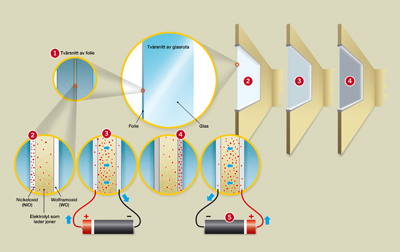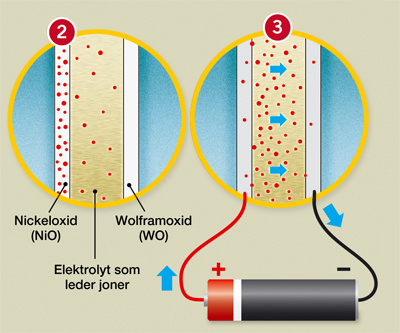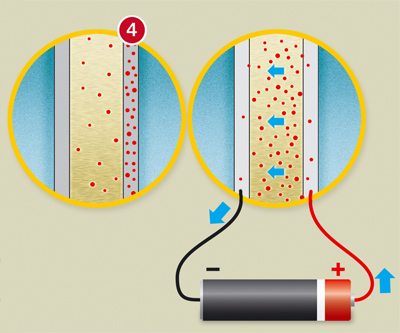|
Tint On Demand
A thin foil inside an ordinary window glass can make the window go darker at the flip of a switch, in order to keep the strong sunlight out of the room inside. Flip again and the glass turns back to it's normal transparency.
1. The core of the flexible foil consists of several thin layers.
2. In the initial state, the Nickel Oxide-layer (NiO) is charged with
ions and is in that state transparent. The Tungsten Oxide-layer (WO) reacts in the opposite way to ions and is only transparent when in absence of ions.
3. When an electric current is added, the ions will follow the current and gradually the NiO-layer is switching over to being dark .
4. When the ions arrive at the WO-layer, this one too switches from transparent to dark.
5. By changing the current's polarity, the ions can be
shuffled back to their initial place and both layers switch from dark to transparent. The electric current is only needed when you want the foil to shift it's properties. The rest of the time the foil will maintain it's status without the electric current.



Material: Interview over the phone with a contact person at the company.
Tools: Illustrator to define the outlines. After that the work was moved to Photoshop for colouring, structures and shadows.
Click on any of the images to return
|